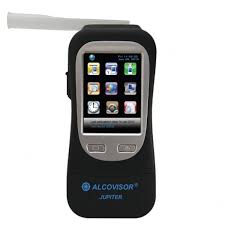… DOT Regulated Alcohol Testing …
FMCSA: Alcohol Testing Devices That Can Be Used in the Trucking Industry…
Alcohol testing in the regulated trucking industry is a fact of life but what is not generally known are the processes behind that testing and what the development was to have effective testing devices. More importantly what is required to be done to have alcohol testing to be in compliance with 49 CFR 40 and 49 CFR part 382 and also for the other transportation modes that are required to do alcohol testing in the workplace.
There are several different types of alcohol testing devices in the market place today. The first requirement is that the alcohol testing devices used is required to be on a current Conforming Products List (CPL) that is published periodically in the Federal Register by National Highway Traffic Safety Administration (NHTSA).
What is the CPL and what is the purpose of the CPL and why is this list done by NHTSA are all factors that need to be addressed for a full understanding of alcohol testing.
The CPL was developed to inform law enforcement agencies what devices could be used to test drivers suspected of DUI and to have those tests hold up in court, if used correctly. It is this background why the Model Specifications were developed and put into place.
Up until 1994, the only CPL that was published was the one for Evidential Breath Testing Devices and met the Model Specifications. It should be noted that those devices met the requirements for highway safety and not for workplace testing purposes.
The Modal Specifications for testing alcohol test devices for the workplace was to meet the alcohol testing requirements as stated in 49 CFR part 40. This work was being done by Highway Safety Programs, a division within NHTSA. This revision was the breath testing devices. The revision for the for breath alcohol testing devices was done partly as a result of states lowering the levels for driving while intoxicated and also to meet DOT alcohol test levels. At the same time, Model Specifications were being developed to ensure that alcohol screen test devices would be used accurately and conform to the identified standards. These were very busy times for NHTSA as there were 8 different notices in the Federal Register in year 1994. All of the work was completed and in time to meet the workplace alcohol testing implementation dates.
It should be noted that all Alcohol Screen Devices (ASDs listed can be used for DOT alcohol testing in accordance with the regulations given in 49 CFR part 40, Subparts J, K and L. At the current time there are 22 approved devices listed in the Federal Register dated June 14. 2012. This CPL is periodically updated as new devices are added or devices are removed.
The CPL for Evidential Breath Testing (EBTs) devices is different to read due to multiple model specifications that have been published. Any devices that are marked with an asterisk meet the specifications that were published December 14, 1984. In the 1984 model specifications, different levels of alcohol were identified that EBTs had to meet. Those BAC levels are 0.000, 0.050, 0.101, and 0.151. These devices are marked with an asterisk. This is a very important differentiation marker.
The model specifications were changed September 17, 1993 have different levels of alcohol that the devices have to be able to test for. The BACs are 0.000, 0.020, 0.040, 0.080, and 0.160. These devise are not marked with an asterisk.
At the current time there are about 100 devices listed that can be used for DOT alcohol testing provided that the device has the following capabilities:
- Provides a printed triplicate result (or three consecutive identical copies of a result) of each breath test;
- Assigns a unique number to each completed test, which the BAT and employee can read before each test and which is printed on each copy of the result;
- Prints, on each copy of the result, the manufacturer’s name for the device, its serial number, and the time of the test;
- Distinguishes alcohol from acetone at the 0.02 alcohol concentration level;
- Tests an air blank; and
- Performs an external calibration check.
These devices have to be used in accordance with 49 CFR Part 40, Subparts J. K L. and M. It is noted that these devices can also be used for alcohol screen testing.
by Robert Schoening…
The next article will explore more of the testing regulations for FMCSA.







